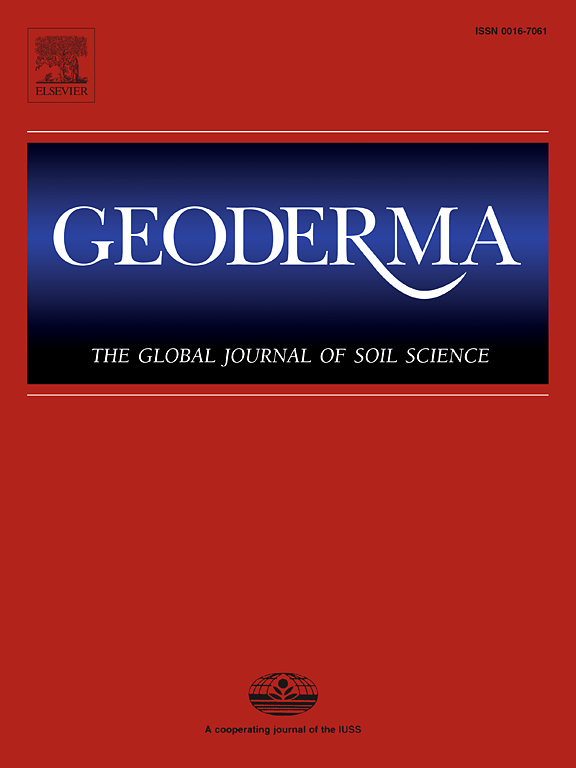Decadal warming-induced changes in abiotic factors and multitrophic diversity drive soil multifunctionality in an alpine meadow
IF 5.6
1区 农林科学
Q1 SOIL SCIENCE
引用次数: 0
Abstract
Climate warming can be detrimental to biodiversity and ecosystem multifunctionality. Numerous studies have examined the effect of warming on ecosystem multifunctionality; however, little is known about how long-term warming affects ecosystem multifunctionality and its seasonal dynamics. Here, we determined the effects of long-term (10 years) in-situ soil warming on multitrophic diversity (plants, soil bacteria, soil fungi, arthropods, and nematodes) and soil multifunctionality in an alpine meadow. The effects of warming on multitrophic diversity were inconsistent, showing a positive effect on soil microbial diversity, including bacterial diversity and fungal diversity, in the upper layer (0–10 cm), a negative effect on plant diversity, and no effect on soil fauna diversity in either the upper (0–10 cm) or lower soil layers (10–20 cm). Warming had a minor effect on soil multifunctionality, and reduced seasonal differences in soil multifunctionality in upper soil layers, but expanded the differences in the lower soil layers. Based on structural equation models, both abiotic factors (soil water content and soil pH) and biotic factors (microbial diversity and fauna diversity) jointly influenced soil multifunctionality, with abiotic factors having a greater effect than biotic factors. The findings provide insights in the important effects of long-term warming on seasonal dynamics of soil multifunctionality, and the crucial role of multitrophic diversity for maintaining the sustainable development of the alpine ecosystem under climate warming.
十年变暖引起的非生物因素和多营养生物多样性的变化推动了高山草甸土壤的多功能性
气候变暖会损害生物多样性和生态系统的多功能性。许多研究都探讨了气候变暖对生态系统多功能性的影响;然而,人们对长期气候变暖如何影响生态系统多功能性及其季节动态却知之甚少。在这里,我们测定了长期(10 年)原位土壤增温对高山草甸中多营养生物多样性(植物、土壤细菌、土壤真菌、节肢动物和线虫)和土壤多功能性的影响。气候变暖对多营养生物多样性的影响并不一致,对上层(0-10 厘米)土壤微生物多样性(包括细菌多样性和真菌多样性)有积极影响,对植物多样性有消极影响,而对上层(0-10 厘米)或下层(10-20 厘米)土壤动物多样性没有影响。气候变暖对土壤多功能性的影响较小,并缩小了上层土壤多功能性的季节性差异,但扩大了下层土壤多功能性的差异。根据结构方程模型,非生物因素(土壤含水量和土壤 pH 值)和生物因素(微生物多样性和动物群落多样性)共同影响土壤多功能性,非生物因素的影响大于生物因素。研究结果揭示了长期气候变暖对土壤多功能性季节动态的重要影响,以及多营养元素多样性在气候变暖条件下维持高山生态系统可持续发展的关键作用。
本文章由计算机程序翻译,如有差异,请以英文原文为准。
求助全文
约1分钟内获得全文
求助全文
来源期刊

Geoderma
农林科学-土壤科学
CiteScore
11.80
自引率
6.60%
发文量
597
审稿时长
58 days
期刊介绍:
Geoderma - the global journal of soil science - welcomes authors, readers and soil research from all parts of the world, encourages worldwide soil studies, and embraces all aspects of soil science and its associated pedagogy. The journal particularly welcomes interdisciplinary work focusing on dynamic soil processes and functions across space and time.
 求助内容:
求助内容: 应助结果提醒方式:
应助结果提醒方式:


